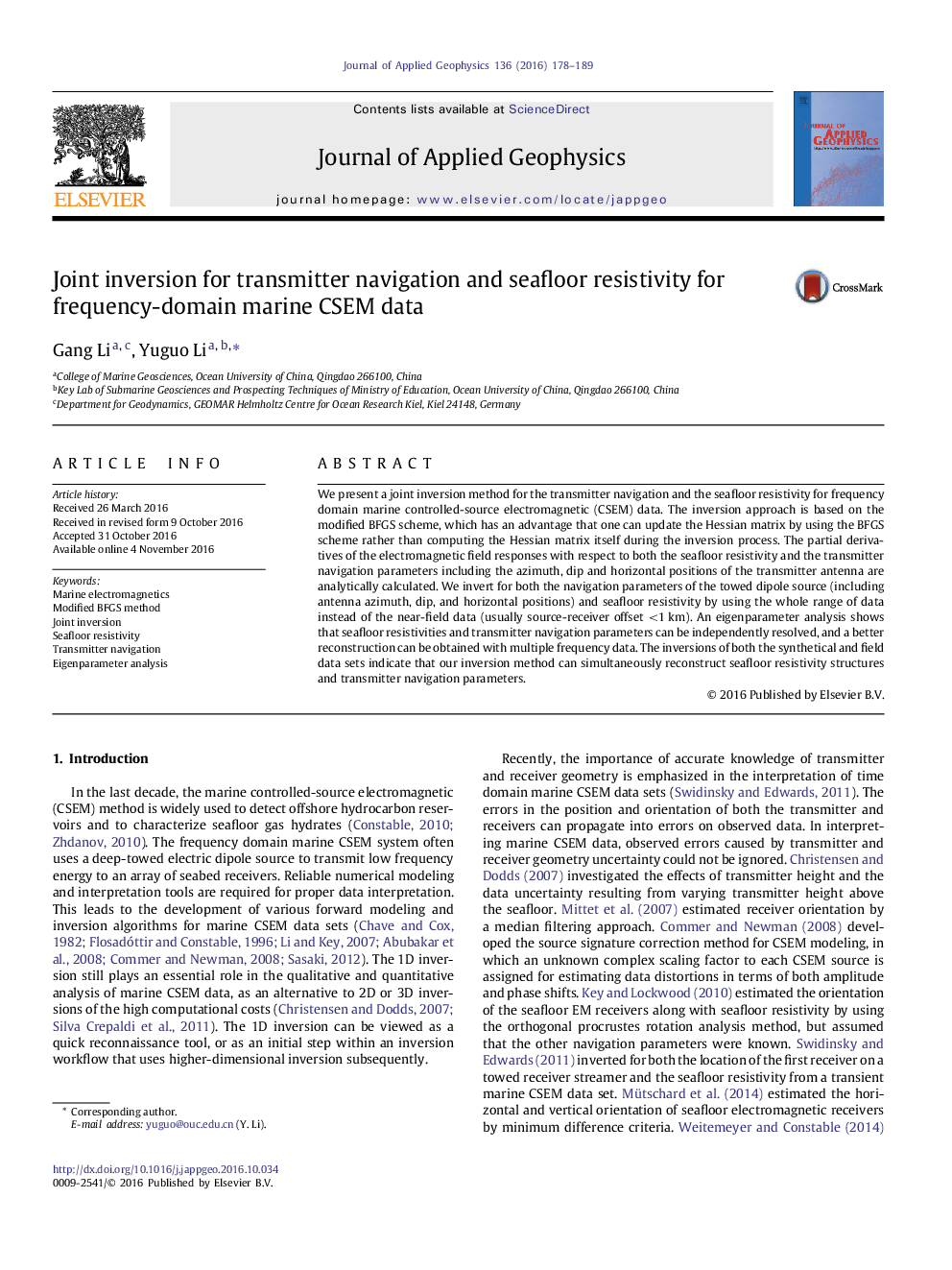| Article ID | Journal | Published Year | Pages | File Type |
|---|---|---|---|---|
| 4739681 | Journal of Applied Geophysics | 2017 | 12 Pages |
•We present a joint inversion method for the transmitter navigation and the seafloor resistivity for frequency domain marine CSEM data.•We invert for both the transmitter navigation parameters of the towed dipole source (including antenna azimuth, dip, and horizontal positions) and seafloor resistivity.•The eigenparameter analysis shows that seafloor resistivities and transmitter navigation parameters can be independently resolved.•The inversions of both the synthetical and field data sets are tested.
We present a joint inversion method for the transmitter navigation and the seafloor resistivity for frequency domain marine controlled-source electromagnetic (CSEM) data. The inversion approach is based on the modified BFGS scheme, which has an advantage that one can update the Hessian matrix by using the BFGS scheme rather than computing the Hessian matrix itself during the inversion process. The partial derivatives of the electromagnetic field responses with respect to both the seafloor resistivity and the transmitter navigation parameters including the azimuth, dip and horizontal positions of the transmitter antenna are analytically calculated. We invert for both the navigation parameters of the towed dipole source (including antenna azimuth, dip, and horizontal positions) and seafloor resistivity by using the whole range of data instead of the near-field data (usually source-receiver offset <1 km). An eigenparameter analysis shows that seafloor resistivities and transmitter navigation parameters can be independently resolved, and a better reconstruction can be obtained with multiple frequency data. The inversions of both the synthetical and field data sets indicate that our inversion method can simultaneously reconstruct seafloor resistivity structures and transmitter navigation parameters.
